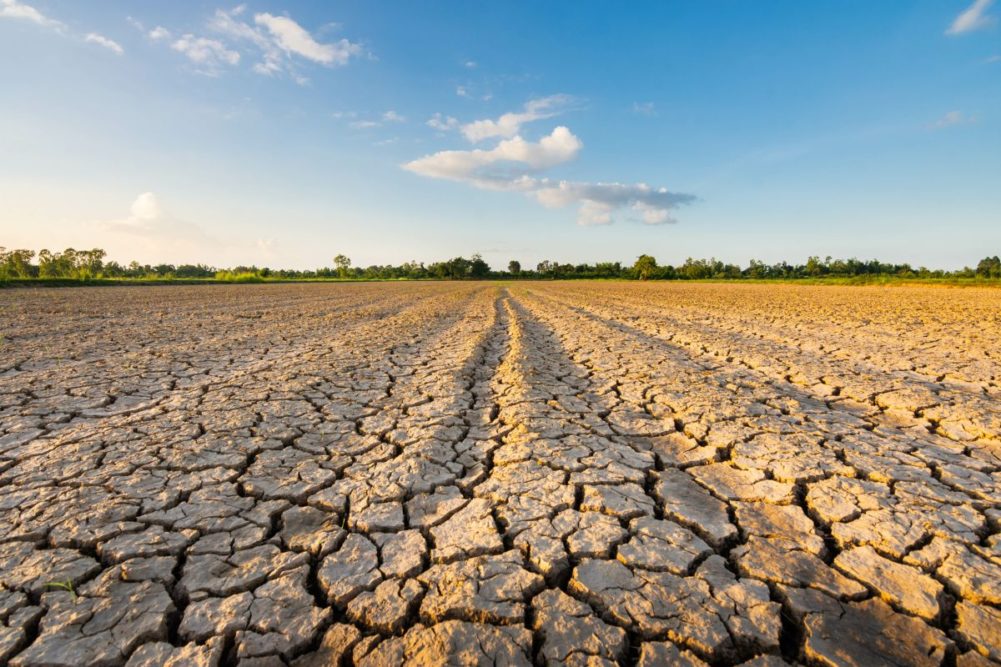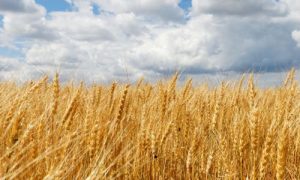Himachal Farmers Worried As Drought Delays Rabi Sowing

Farmers in Himachal Pradesh’s Kangra district, particularly in the Nurpur belt, are facing severe drought conditions, with no rainfall for 58-60 days. This has delayed wheat and mustard sowing, impacting the livelihoods of farmers who rely on rainfall for irrigation. Areas such as Jawali, Indora, and Fatehpur are also affected. Additionally, the lack of water has led to a 40-45% drop in water discharge from kuhls (irrigation channels). Scientists link the issue to climate change, worsening the vulnerability of rainfed agriculture.
Standing in the middle of his unsown fields, Lekh Raj gazes upwards to the sky longing for the clouds which could break the prolonged dry spell. He then kneels down to feel the parched soil with his hands. It’s all dry, brittle and lifeless. His face turns gloomy as looks at barren fields’ all round village Batoli Lamian, located in the Nurpur belt Himachal Pradesh’s Kangra district.
“There is not even a drop of rain for the past 58 to 60 days. We have lost a critical period of wheat sowing. There is no moisture in the soil. The drought conditions continue to intensify leaving the farmers with no hope to repeat the harvest, get fodder, seasonal vegetables and fruits—Mangoes grown in abundance.
The land conditions in the Nurpur area of Kangra, Himachal Pradesh, are quite favourable for agricultural activities, primarily due to its diverse topography. A moderate climate in this region at the foot of the Dhauladhar range, Nurpur is ideal for a variety of crops.
But, with lack of irrigation facilities, the crops are dependent on rainfall providing sufficient moisture and water richness to the soil. Beside wheat—the main rabi crop, the area also grows maize and pulses and vegetables.
Lekh Raj, says his family owns 80 to 100 kanals of land. They could not undertake sowing wheat and mustard.
The conditions are no better in nearby areas of Jawali, Indora and Fatehpur, Shahpur and Nagotra Surian .The farmers are grappling with a prolonged dry spell that has delayed rabi sowing .The failed rains also has severely impacted the citrus crops like orange, kinnow, lemon and galgal.
“If it doesn’t rain in the coming weeks, irrigation schemes will also be affected, potentially leading to a drought-like situation in many parts of the state. Its impact on productivity can be imagined” warns University researchers at Palampur.
A prolonged dry spell combined with unusually warm winter temperatures can further impact the wheat already sown in some areas. The lack of rainfall depletes soil moisture crucial for the growth of the crop.
B S Mahal, a retired fire brigade personnel, now into farming also narrates his anxiety about failed winter rains and a worsened the situation.
“The farmers in my area kept waiting for the rains since Mid –October and even till November 15, they could not do the sowing and eventually gave-up” he says.
Farmers like Raj Kumar and Shymanand recall that after they harvested the maize in October, the fields were prepared for sowing wheat and mustard. After a long wait, they did took-up sowing in hope for the rains.
“Till now, we are looking up to sky” said Kakaram of village Bhuliya.
The scientists at HP department of Environment and Climate change attribute the situation as a result of climate change.
“Rain is crucial for the farmers in lower Himachal Pradesh, as not all areas have access to irrigation facilities. The increasing vulnerability of rainfed agriculture in the face of changing climate patterns, is a new area of concern,” says Suresh Attri, Principal Scientist and climate change expert.
Data with the agriculture department shows that around 92,000 hectare land was under wheat cultivation in Kangra district last year. This time, it is going to drop significantly as more than 80% of the area is rainfed only.
Meanwhile another worrying factor is that water discharge in the kuhls – historical water channels have dropped down by about 40 to 45 percent. Many kuhls have already dried-up and others are defunct due to damage and lack of upkeep.
“Last year, the Jalshakti department projected a demand of Rs 55 cr for the repair of kuhls in Kangra district. Not a single rupee received” a senior engineer informed.
Reports say there are 350 kuhls in Kangra district which source water from natural streams in the region for supply to the fields of farmers. Of this only 60 percent are functional but flow below their capacity.
To read more about Wheat News continue reading Agriinsite.com
Source Link : Outlook India

















